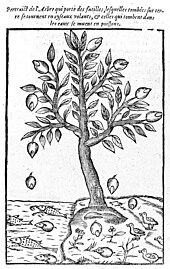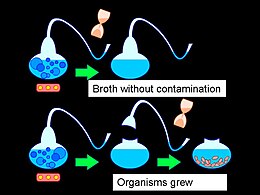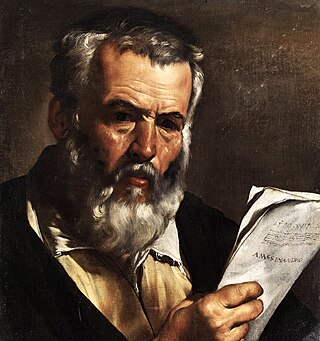
Anaximander was a pre-Socratic Greek philosopher who lived in Miletus, a city of Ionia. He belonged to the Milesian school and learned the teachings of his master Thales. He succeeded Thales and became the second master of that school where he counted Anaximenes and, arguably, Pythagoras amongst his pupils.

Anaximenes of Miletus was an Ancient Greek, Pre-Socratic philosopher from Miletus in Anatolia. He was the last of the three philosophers of the Milesian School, after Thales and Anaximander. These three are regarded by historians as the first philosophers of the Western world. Anaximenes is known for his belief that air is the arche, or the basic element of the universe from which all things are created. Little is known of Anaximenes' life and work, as all of his original texts are lost. Historians and philosophers have reconstructed information about Anaximenes by interpreting texts about him by later writers. All three Milesian philosophers were monists who believed in a single foundational source of everything: Anaximenes believed it to be air, while Thales and Anaximander believed it to be water and an undefined infinity, respectively. It is generally accepted that Anaximenes was instructed by Anaximander, and many of their philosophical ideas are similar. While Anaximenes was the preeminent Milesian philosopher in Ancient Greece, he is often given lower importance than the others in the modern day.

Louis Pasteur was a French chemist, pharmacist, and microbiologist renowned for his discoveries of the principles of vaccination, microbial fermentation, and pasteurization, the last of which was named after him. His research in chemistry led to remarkable breakthroughs in the understanding of the causes and preventions of diseases, which laid down the foundations of hygiene, public health and much of modern medicine. Pasteur's works are credited with saving millions of lives through the developments of vaccines for rabies and anthrax. He is regarded as one of the founders of modern bacteriology and has been honored as the "father of bacteriology" and the "father of microbiology".
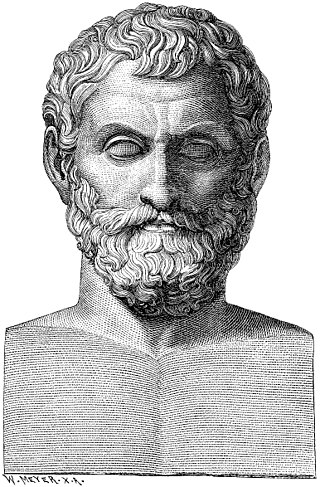
Thales of Miletus was an Ancient Greek pre-Socratic philosopher from Miletus in Ionia, Asia Minor. Thales was one of the Seven Sages, founding figures of Ancient Greece, and credited with the saying "know thyself" which was inscribed on the Temple of Apollo at Delphi.

Natural science is one of the branches of science concerned with the description, understanding and prediction of natural phenomena, based on empirical evidence from observation and experimentation. Mechanisms such as peer review and repeatability of findings are used to try to ensure the validity of scientific advances.

In biochemistry, fermentation theory refers to the historical study of models of natural fermentation processes, especially alcoholic and lactic acid fermentation. Notable contributors to the theory include Justus Von Liebig and Louis Pasteur, the latter of whom developed a purely microbial basis for the fermentation process based on his experiments. Pasteur's work on fermentation later led to his development of the germ theory of disease, which put the concept of spontaneous generation to rest. Although the fermentation process had been used extensively throughout history prior to the origin of Pasteur's prevailing theories, the underlying biological and chemical processes were not fully understood. In the contemporary, fermentation is used in the production of various alcoholic beverages, foodstuffs, and medications.

Francesco Redi was an Italian physician, naturalist, biologist, and poet. He is referred to as the "founder of experimental biology", and as the "father of modern parasitology". He was the first person to challenge the theory of spontaneous generation by demonstrating that maggots come from eggs of flies.
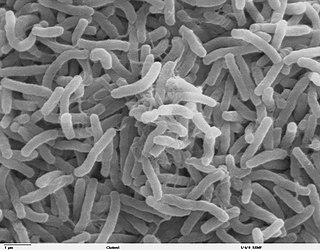
The germ theory of disease is the currently accepted scientific theory for many diseases. It states that microorganisms known as pathogens or "germs" can cause disease. These small organisms, too small to be seen without magnification, invade humans, other animals, and other living hosts. Their growth and reproduction within their hosts can cause disease. "Germ" refers to not just a bacterium but to any type of microorganism, such as protists or fungi, or other pathogens that can cause disease, such as viruses, prions, or viroids. Diseases caused by pathogens are called infectious diseases. Even when a pathogen is the principal cause of a disease, environmental and hereditary factors often influence the severity of the disease, and whether a potential host individual becomes infected when exposed to the pathogen. Pathogens are disease-carrying agents that can pass from one individual to another, both in humans and animals. Infectious diseases are caused by biological agents such as pathogenic microorganisms as well as parasites.
Primordial soup, also known as prebiotic soup, is the hypothetical set of conditions present on the Earth around 3.7 to 4.0 billion years ago. It is an aspect of the heterotrophic theory concerning the origin of life, first proposed by Alexander Oparin in 1924, and J. B. S. Haldane in 1929.

Hylozoism is the philosophical doctrine according to which all matter is alive or animated, either in itself or as participating in the action of a superior principle, usually the world-soul. The theory holds that matter is unified with life or spiritual activity. The word is a 17th-century term formed from the Greek words ὕλη and ζωή, which was coined by the English Platonist philosopher Ralph Cudworth in 1678.

The Ionian school of Pre-Socratic philosophy refers to Ancient Greek philosophers, or a school of thought, in Ionia in the 6th century B.C, the first in the Western tradition.
Invertebrate zoology is the subdiscipline of zoology that consists of the study of invertebrates, animals without a backbone.
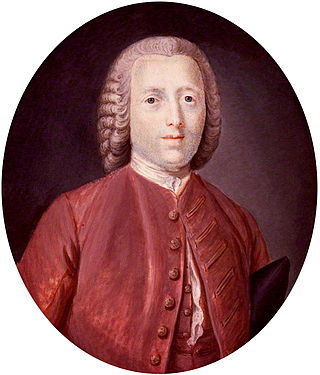
John Turberville Needham FRS was an English biologist and Roman Catholic priest.

Félix-Archimède Pouchet was a French naturalist and a leading proponent of spontaneous generation of life from non-living materials, and as such an opponent of Louis Pasteur's germ theory. He was the father of Georges Pouchet (1833–1894), a professor of comparative anatomy.
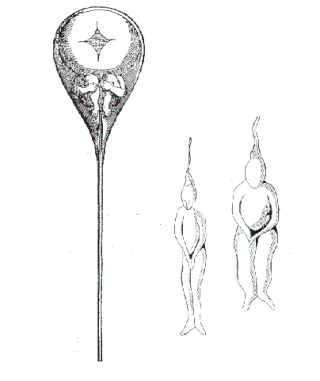
In the history of biology, preformationism is a formerly popular theory that organisms develop from miniature versions of themselves. Instead of assembly from parts, preformationists believed that the form of living things exist, in real terms, prior to their development. Preformationists suggested that all organisms were created at the same time, and that succeeding generations grow from homunculi, or animalcules, that have existed since the beginning of creation, which is typically defined by religious beliefs.
Evolutionary ideas during the periods of the Renaissance and the Enlightenment developed over a time when natural history became more sophisticated during the 17th and 18th centuries, and as the scientific revolution and the rise of mechanical philosophy encouraged viewing the natural world as a machine with workings capable of analysis. But the evolutionary ideas of the early 18th century were of a religious and spiritural nature. In the second half of the 18th century more materialistic and explicit ideas about biological evolution began to emerge, adding further strands in the history of evolutionary thought.
Apeiron is a Greek word meaning '(that which is) unlimited; boundless; infinite; indefinite' from ἀ- a- 'without' and πεῖραρ peirar 'end, limit; boundary', the Ionic Greek form of πέρας peras 'end, limit, boundary'.
The history of experimental research is long and varied. Indeed, the definition of an experiment itself has changed in responses to changing norms and practices within particular fields of study. This article documents the history and development of experimental research from its origins in Galileo's study of gravity into the diversely applied method in use today.

Scrutinium Physico-Medicum Contagiosae Luis, Quae Pestis Dicitur is a 1658 work by the Jesuit scholar Athanasius Kircher, containing his observations and theories about the bubonic plague that struck Rome in the summer of 1656. Kircher was the first person to view infected blood through a microscope, and his observations are described in the book. The work was printed on the presses of Vitale Mascardi and dedicated to Pope Alexander VII.
The history of research into the origin of life encompasses theories about how life began, from ancient times with the philosophy of Aristotle through to the Miller-Urey experiment in 1952.




